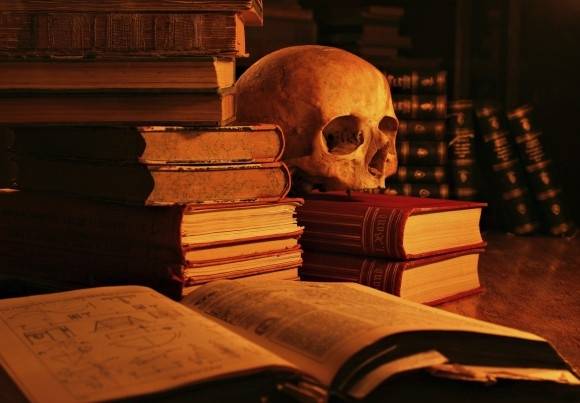
Halloween is upon us once again, and it behooves us here at Smile Politely to commemorate the season with something fun and informative. Under the banner of the Arts Section, this usually means curating some sort of “Best of” list, enumerating all the groovy and/or ghouly horror films one might enjoy before, after, or instead of passing out candy to throngs of Trick-or-Treaters. But, alas, it’s all too easy and all too common to leave out someone’s favorite slasher flick. Added to which, we’ve been there and done that.
So, since Smile Politely has enjoyed quite a run of literary-themed articles lately, I thought we’d take a different tack. Instead of talking about scary movies, I thought, howzabout we go once around the campfire and ask some of SP’s favorite local readers and writers to share the books that make them leave the lights on?
[Disclaimer: we do not guarantee that you will necessarily find scary what we find scary. Nor do we claim to have read everything. You might (and likely will) have differing opinions, and we invite you to share them. Feel free to leave a comment with your own suggestion. We’re always looking for something new to read.]
———
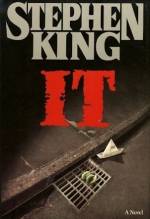 Seth Fein, SP publisher
Seth Fein, SP publisher
Obviously, Stephen King is an author that takes heat because of his popularity, but it’d be hard to argue that there wasn’t a more impactful and effective horror writer in, perhaps, all of history. What made IT scary for me was its psychological component; while Pennywise the clown was the physical manifestation that we got to “see,” the concept of IT was your fears, and that’s what made it hard to read, and impossible to put down. I was just a kid when I read it, but had some pretty gnarly dreams as a result.
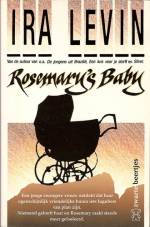
Thom Schnarre, SP contributor
My top two are William Peter Blatty’s The Exorcist and Ira Levin’s Rosemary’s Baby. I read both when I was in the sixth or seventh grade because my parents did not monitor my reading choices AT ALL. I guess they were just happy to see me reading. What freaks me out about both novels is that they start with very mundane and commonplace situations that build and morph into a battle with ultimate evil. I’m a big fan of evil that can’t be completely banished, something that, in film adaptations, usually results in a few cheesy sequels. In each book, the author gives us a satisfactory resolution, but the horror is still present and lurking in the shadows — either directly, like in Rosemary’s Baby, or indirectly, like in The Exorcist, where the evil vacates the bodies, but is still a presence seeking its next victim. And what’s the real pisser in both is that the victims are so ordinary and everyday that the authors are basically telling us that this sort of fucked up shit can happen to anyone. ANYONE! Terrifying!
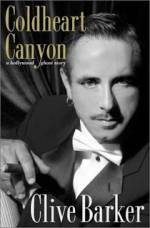 A runner up choice would be Clive Barker’s Coldheart Canyon, where the portal to Hell resides in the wine cellar of a lush and sordid mansion tucked neatly away in the Hollywood Hills. I found the ending of the book disappointing, but Barker’s premise — that a Tom Cruise-like actor seeks refuge in said mansion after a botched plastic surgery — is really erotic and creepy. That’s a potent combo for me, and the fact that the evil from the house’s cellar causes every major Hollywood scandal from Marilyn’s suicide to the Manson family’s murder of Sharon Tate and company is gnarly-cool! Oh, and I decorated my bedroom as an homage to this creepy book. Just FYI. Sweet dreams!
A runner up choice would be Clive Barker’s Coldheart Canyon, where the portal to Hell resides in the wine cellar of a lush and sordid mansion tucked neatly away in the Hollywood Hills. I found the ending of the book disappointing, but Barker’s premise — that a Tom Cruise-like actor seeks refuge in said mansion after a botched plastic surgery — is really erotic and creepy. That’s a potent combo for me, and the fact that the evil from the house’s cellar causes every major Hollywood scandal from Marilyn’s suicide to the Manson family’s murder of Sharon Tate and company is gnarly-cool! Oh, and I decorated my bedroom as an homage to this creepy book. Just FYI. Sweet dreams!
Jaleigh Johnson, author of The Mark of the Dragonfly
It would have to be Pet Sematary by Stephen King because parts of that story feel realistic enough to be truly terrifying.
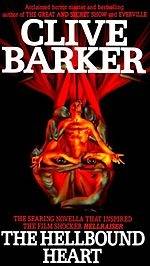
JTR Brown, author of The Charlatans
While its much more highbrow to say, “Oh of course, At the Mountains of Madness by H.P. Lovecraft or Stoker’s Dracula,” I am actually going to go with The Hellbound Heart by Clive Barker. I think that book is so scary because it seamlessly weaves several elements of terror together in one fast-paced, ultra-tense novella. It utilizes the supernatural elements of horror with the creation of the Cenobites, a twisted group of sadomasochist cultist/creatures from another dimension and their hellish realm. Barker also repurposes the haunted house motif uniquely with the character of Frank attempting to escape the Cenobites realm by trying to establish a physical form in the home his brother owns. Throw in visceral “body-terror,” where someone or something is experiencing horrifying bodily changes, a serial killing femme fatale, and Barker’s ever-present literary device of damnation, and you have a tale that will make the blood curdle in anyone who has a pulse. Perhaps the strangest and most frightening thing about Hellbound Heart is how astoundingly beautiful and poetic Barker’s prose is. Seriously. It rivals Fitzgerald or D.H. Lawrence in pure beauty. It’s a stark and terrifying contrast to his subject matter.
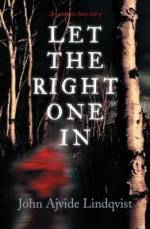 Lindsey Gates-Markel, actor and author of You Are Among Friends
Lindsey Gates-Markel, actor and author of You Are Among Friends
I read the final chapters of Let the Right One In by John Ajvide Lindqvist while sitting on the floor of my husband’s studio because I just… needed to be near another person. Set in a dark Swedish winter in 1981, it’s a “vampire novel,” yes, but an original, disturbing, and beautiful one, with a complex storyline that weaves real-life horrors with the supernatural and draws thoughtful connections between the two. I’m a fan of the movie(s) as well, but the novel transcends the limits of film, fleshing out vulnerable characters, boundless gore, and impossible moral dilemmas to deliver a truly scary story.
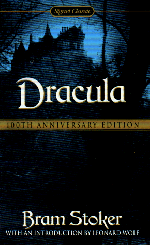
Jake Aurelian, aka Ripper the Clown
I consider Dracula by Bram Stoker to be the scariest book I’ve ever read. It’s a classic on every level: innovative, groundbreaking, and incredibly frightening. Published over 100 years ago, Dracula is the precursor to the vast horror and (overdone) vampire genres. I was first introduced to Dracula while an undergrad at the University of Illinois, wherein we read excerpts in one of my many English literature courses; the presentation and text immediately captured me (and unlike other required readings, Dracula wasn’t a chore, it was a pleasure). Dracula is told via firsthand accounts (letters, journals, memos) from all the players; brilliantly unfolding in chronological order, the plethora of voices are all unique and distinct. They feel and sound authentic, like you are perusing a dusty old journal that hasn’t been seen or read in 100 years. The authenticity presented in the multitude of voices has always fascinated me — the pieced-together story feels real, the fear peppered in the accounts feels real — and without question, I fell in love with Bram Stoker’s variety of first person accounts. And understanding, through Dracula, how first persona narrative can be used to craft and tell a solid and complex story—the authenticity (or lack of credibility) of the voice, the personal nature of the voice, the urgency of the voice — it’s the style I’ve utilized for the majority of my fiction books. Dracula is scary — the epitome of horror — without excessive violence! Don’t get me wrong, this is a vampire story, so the violence exists, the fear is there, the intensity is there … but said violence, fear, and intensity are depicted in non-graphic terms and a psychological style that rarely exists in Dracula’s contemporary counterparts. Dracula is kind of like what Hitchcock masterfully portrayed in his films — sometimes the greatest fear is what’s not shown or even discussed; the mind’s depiction of what isn’t seen or told adds to that fear and suspense … and this is how Bram Stoker crafted Dracula. Believe it or not—Dracula is still scary without graphic accounts of sanguine violence. And that’s why Dracula is a horror classic.

Kelly Strom, Collection Manager for Champaign Public Library
I enjoy reading scary stories, but I do tend to lean more into the suspense/thrillers angle of horror fiction. I love the novella The Library Policeman by Stephen King. This one is about a businessman who doesn’t return his books to the library on time. (Uh oh.) Underlying horrors creep to the surface in the suspicious smells all the way to some truly frightening posters in the children’s department!
Another favorite is the novel The Ruins by Scott Smith. A group of young adults take a vacation to Mexico, unaware of the terrors awaiting in the rainforest surrounding a set of archeological ruins. I stayed up late just to finish this one.
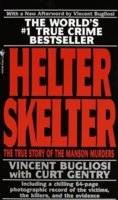 Lastly, Helter Skelter: The True Story of the Manson Murders by Vincent Bugliosi truly sent chills up and down my spine when I read it many years ago. For someone who passed through my high schools years going to one slasher movie after another, the true-life story of Charles Manson completely changed my perspective on the genre. And now I just can’t watch those movies any more. Because they’re real. It happened.
Lastly, Helter Skelter: The True Story of the Manson Murders by Vincent Bugliosi truly sent chills up and down my spine when I read it many years ago. For someone who passed through my high schools years going to one slasher movie after another, the true-life story of Charles Manson completely changed my perspective on the genre. And now I just can’t watch those movies any more. Because they’re real. It happened.
Mary Wilkes Towner, Interim Director of Adult Services for the Urbana Free Library
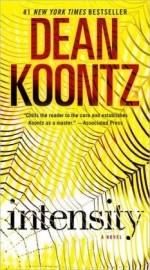 The scariest book I’ve ever read is Intensity by Dean Koontz. I found it truly terrifying because the plot involves a serial killer, and Koontz made me believe his story could really happen. Picture Chyna Shepherd, the protagonist, visiting the Napa Valley home of her best college friend. She wakes in the night to a strange noise, and discovers her friend’s parents have been murdered—and her dying friend driven off in an RV by the killer. Chyna takes off after him, hoping to either save her friend or ID the man for the police. Instead, he almost discovers her — and she overhears him boasting that his next victim is an innocent he has captive. Instead of escaping, Chyna continues to follow, determined to save the endangered child and unaware she’s been spotted. Will Chyna succeed in her rescue? Or will the mysteriously elusive killer claim another victim? (Don’t watch the movie. It wasn’t nearly as scary.)
The scariest book I’ve ever read is Intensity by Dean Koontz. I found it truly terrifying because the plot involves a serial killer, and Koontz made me believe his story could really happen. Picture Chyna Shepherd, the protagonist, visiting the Napa Valley home of her best college friend. She wakes in the night to a strange noise, and discovers her friend’s parents have been murdered—and her dying friend driven off in an RV by the killer. Chyna takes off after him, hoping to either save her friend or ID the man for the police. Instead, he almost discovers her — and she overhears him boasting that his next victim is an innocent he has captive. Instead of escaping, Chyna continues to follow, determined to save the endangered child and unaware she’s been spotted. Will Chyna succeed in her rescue? Or will the mysteriously elusive killer claim another victim? (Don’t watch the movie. It wasn’t nearly as scary.)
———
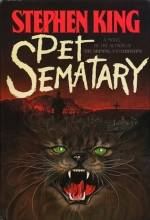 And what about me? I’ll admit that I debated heavily on this one. My first instinct was to go with Pet Sematary, which was the first book ever to give me a legitimate chill. I was in junior high, for some reason reading while stretched out on the floor of my parents’ bedroom, and had to get up and relocate to the living room where I wouldn’t be alone. That was a seminal experience, being scared by a book, and I’ll never forget it. Luckily, Jaleigh Johnson picked Pet Sematary as her scariest book, so I can move on.
And what about me? I’ll admit that I debated heavily on this one. My first instinct was to go with Pet Sematary, which was the first book ever to give me a legitimate chill. I was in junior high, for some reason reading while stretched out on the floor of my parents’ bedroom, and had to get up and relocate to the living room where I wouldn’t be alone. That was a seminal experience, being scared by a book, and I’ll never forget it. Luckily, Jaleigh Johnson picked Pet Sematary as her scariest book, so I can move on.
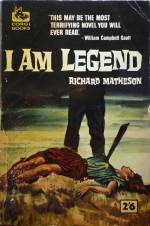 Next in line, and a strong contender for the belt, is Richard Matheson’s I Am Legend. Forget the film adaptations — of which I’m aware of three: Vincent Prince in Last Man on Earth, Charlton Heston in Omega Man, and Will Smith in I Am Legend. To understand what makes this book so brilliant, you have to stay with the page. Robert Neville, the protagonist, is not an action hero. He’s just a man who has had to adapt to the world going insane around him. Yes, he kills some vampires, but he also spends a goodly chunk of the story just sitting and thinking, and therein lies the beauty of this literary work. He is trying to puzzle out how the vampires took over and what makes them tick. Why is garlic an effective deterrent? Why wouldn’t a vampire cast a reflection? Why is the cross such a powerful weapon, when surely there are Jewish or Muslim (not to mention Atheist) vampires as well? Holy water? Sunlight? Why are the myths so consistent and so seemingly true? A smart book, and one that understands that there is as much to fear from isolation and paranoia as there is from a monster outside the door.
Next in line, and a strong contender for the belt, is Richard Matheson’s I Am Legend. Forget the film adaptations — of which I’m aware of three: Vincent Prince in Last Man on Earth, Charlton Heston in Omega Man, and Will Smith in I Am Legend. To understand what makes this book so brilliant, you have to stay with the page. Robert Neville, the protagonist, is not an action hero. He’s just a man who has had to adapt to the world going insane around him. Yes, he kills some vampires, but he also spends a goodly chunk of the story just sitting and thinking, and therein lies the beauty of this literary work. He is trying to puzzle out how the vampires took over and what makes them tick. Why is garlic an effective deterrent? Why wouldn’t a vampire cast a reflection? Why is the cross such a powerful weapon, when surely there are Jewish or Muslim (not to mention Atheist) vampires as well? Holy water? Sunlight? Why are the myths so consistent and so seemingly true? A smart book, and one that understands that there is as much to fear from isolation and paranoia as there is from a monster outside the door.
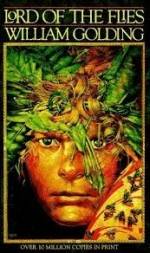 But the Scariest? No. Even though Matheson is a favorite, I still can’t give his book the title of Scariest Book I’ve Ever Read. Because of all the books I’ve read, in and out of the “horror” or “thriller” categories, there is one tale that will haunt me the rest of my days. I read this book for the first time when I was in the eighth grade, if I remember correctly, and as I grow older, the nature of the terror it inspires evolves. The book, published in 1954 by William Golding, is Lord of the Flies.
But the Scariest? No. Even though Matheson is a favorite, I still can’t give his book the title of Scariest Book I’ve Ever Read. Because of all the books I’ve read, in and out of the “horror” or “thriller” categories, there is one tale that will haunt me the rest of my days. I read this book for the first time when I was in the eighth grade, if I remember correctly, and as I grow older, the nature of the terror it inspires evolves. The book, published in 1954 by William Golding, is Lord of the Flies.
The premise is so simple and has inspired so many imitations: a group of schoolboys are marooned on an island, they attempt to govern themselves, and things devolve into savagery. There are threads of this plot woven into everything from LOST to The Hunger Games, and the lesson implied about human nature and man’s own cruelty is unmistakable. There is something allegorical in the story of a lone voice of reason against the insidiousness of groupthink and mob mentality. There is something terrifying about the fact that the bloody violence played out in this wilderness is the handiwork of children.
As long as I live, I will be haunted by the scene in which Ralph — who originally tried to organize and lead the boys and has since been cast out and hunted by the others — is given some intelligence by Samneric (Sam & Eric), twins who are now part of the hunting “tribe.” Ralph is warned that Roger, the most proficient hunter, has “sharpened a stick at both ends.” Even without context, that’s the stuff of nightmares.
That’s good writing.








